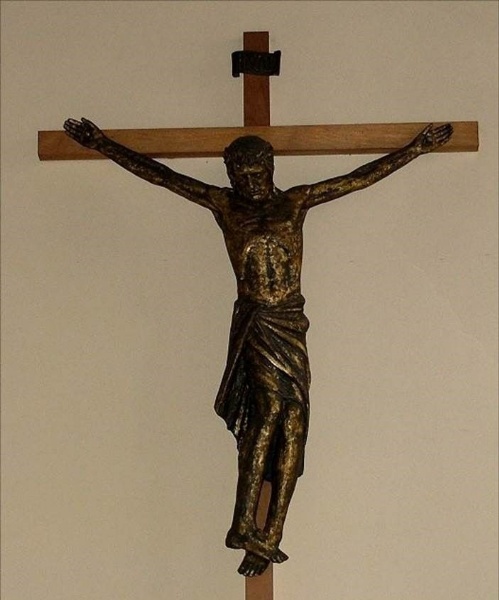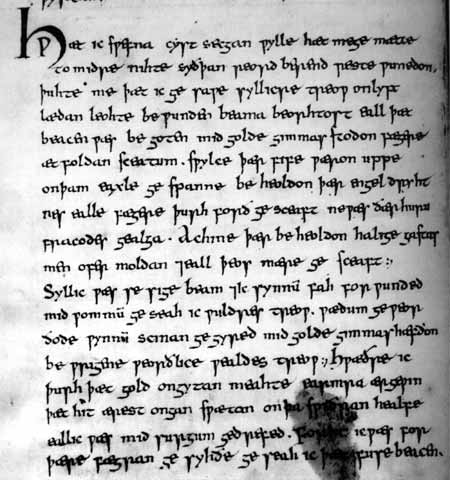Afraid of the Cross

What frightens you?
When I was a child, I was frightened of the Cross.
The crucifix - that is, the image of the cross with the crucified Jesus - in the church I attended as a child, was a very powerful piece of art. I wish I could show you a picture of it. Made of bronze, it shows Our Lord with his head bowed in death. One other detail I can remember is that His right foot is bent round, so that the nail can pierce both His feet.*
I can remember as a child sitting in church on Good Friday and thinking about the physical agony that He must have suffered; thinking about His wounds, the blood pouring down His face and into his eyes from the crown of thorns pushed violently onto His head. These thoughts scared me.
Over a thousand years ago, someone in England - we don't know who - wrote a poem called The Dream of the Rood (spelt R-O-O-D). 'Rood' is an Old English word for 'cross'. In this strange yet beautiful poem, the poet has a dream in which he or she imagines the Cross speaking in the first person about its experience of being cut down from a forest, lifted up and made to carry the body of Our Lord. Here is an excerpt from the poem: as I said, the speaker is the Rood – the Cross:
It was so long ago––I remember it still––
that I was felled from the forest’s edge,
ripped up from my roots. Strong enemies seized me there,
made me their spectacle, made me bear their criminals;
they bore me on their shoulders and then set me on a hill,
enemies enough fixed me fast. Then I saw the Lord of mankind
hasten eagerly, when he wanted to ascend upon me.
Then the young hero made ready—that was God almighty—
strong and resolute; he ascended on the high gallows,
brave in the sight of many, when he wanted to ransom mankind.
I trembled when he embraced me, but I dared not bow to the ground,
or fall to the earth’s corners––I had to stand fast.
I was reared as a cross: I raised up the mighty King,
the Lord of heaven; I dared not lie down.
They drove dark nails through me; the scars are still visible,
open wounds of hate; I dared not harm any of them.
They mocked us both together; I was all drenched with blood
flowing from that man’s side after he had sent forth his spirit.

Adulthood, experience, life... has taken away my fear of the Cross. Perhaps this is a good thing. Perhaps you think it's strange, even cruel, for a child to feel as I did and that my parents should have protected me from such things? I'm not so sure. Sometimes I wish I could recreate in myself the sense of fear and awe that I felt as a child when face to face with the crucified Lord.
For Christians though, the Cross is not just a reminder of suffering. It's a symbol of love, of sacrifice, and of hope. The story at the heart of Christianity is that Jesus willingly chose the Cross—not out of weakness, but out of strength.
At the end of The Dream of the Rood, the Cross is transformed:
They mocked us both. I was drenched in blood, streaming from the side of God’s Son. But now I am honoured above all trees.
The same Cross that was a tool of execution becomes something honoured and treasured. That reversal is part of the Christian message—that even the darkest moments can be transformed by love and hope.
As we approach Easter, maybe take a moment to think about what the Cross could mean for you—not just as a symbol hanging in a church or on a wall, but as an invitation.
An invitation to live with more courage. More empathy. More love.
* Image of the Cross: The Crucifix in Our Lady of the Annunciation, Mr Smith’s childhood church